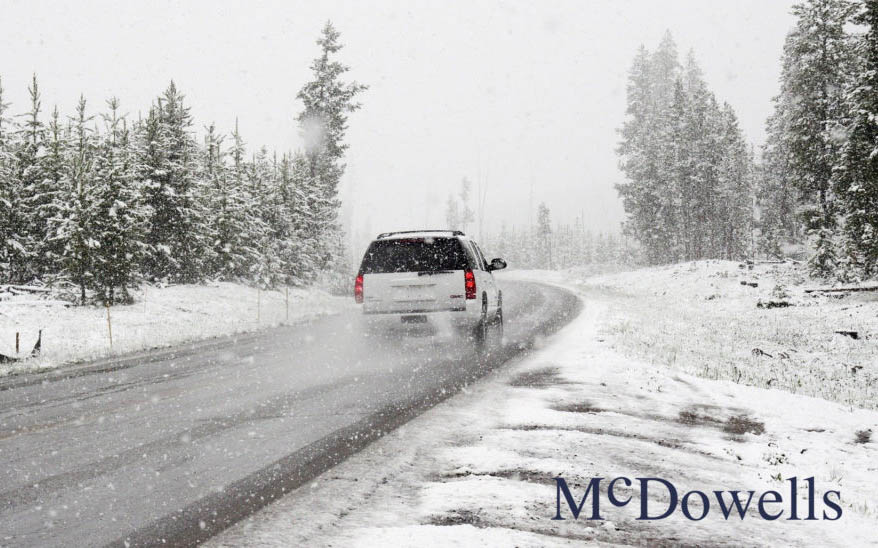Recommended Read: Winterize Your Car Before It’s Too Late
If you haven’t already, consider reading about how to winterize your car before you go out and drive in the snow! Even if you think you’re ready, this guide will help fill in the “potholes” of winter prep so you can reach your destination safely.
Cue the sleigh bells ringing and children singing. It’s that time of year when the snow starts to fall and the Treasure Valley turns into a winter wonderland. The air is not always filled with Christmas cheer in December. Instead, you may be hearing the screech of tires skidding and pop of glass breaking.
Idaho was found to be the 4th most dangerous state for driving in the snow in 2018.
It’s hard to celebrate when you’re worried about traveling to your destination. Luckily for you, we’ve come up with a few driving tips for the winter. It’s one thing to winterize your car, but it’s another to actually drive it. Just because your car is prepped ahead of time for the snow and ice, doesn’t mean it’s immune to all accidents.
- Avoid Sliding
- Drive Slow
- Maintain Your Vehicle
What to Do When Your Car Slides
You may be feeling confident in your driving abilities. Enough to go whatever speed you want to go. BUT! Please be mindful that it only takes one wrong move to send your car into a slide. Whether it be a sharp turn or the person in front of you slammed on their brakes, but it’s best to try to avoid the accident!
For a basic guide, follow this:
- Don’t Slam on the Brakes
- “Turn into the Slide”
- Don’t Overcorrect
While this is a great basic overview of what to do when you slide, consider familiarizing yourself with the different kinds of car skids. You have to act fast, and even if you follow all the basic steps, it still varies depending on how your vehicle reacts to the ice and snow. If anything, you should be following the rule of going slow in the snow.
Why Driving Slow in the Snow Is Important
What’s new? You may have heard that slowing down is the end all be all safety trick for driving in the snow. Well. It is. As aggravating as it is to be behind slow drivers, ease off the gas a bit this season. If you end up rear-ending someone then it is almost always “YOUR” fault. The chance of you being an accident significantly increases the faster you go.
When you drive slow in the snow you can avoid:
- Sliding & Skidding
- Accidents
- Towing costs
- Injuries
- Expensive Repairs
Now, I’m not saying go so slow you put yourself to sleep. Go at a speed where you feel safe and in control at all times. If you’ve reached an icy hill, accelerate a little bit to gain some inertia to make it all the way up. DO NOT press hard on the gas while you are already on the hill, you could send yourself into a spin.
Prepare Your Vehicle For Winter
Winter offers a unique set of challenges both with the weather and the shorter days. This means certain items on your car may need more attention. Winter tires can be invaluable for snow driving. These tires have special tread patterns for snow and ice and some even have metal studs for added grip. They’re also made from a rubber compound engineered for lower temperatures. It’s also important to have bright and clear headlights.
When the snow starts to fall, be sure to not just brush it off of your windows but also your lights so your car is as visible as possible for other drivers. If they are dull or faded, headlights can also be restored for better brightness and visibility.
Conclusion
If you plan on driving up north for some skiing or snowboarding hopefully this guide helps you feel more comfortable and confident on your adventure! If you do wind up with a new scratch or dent, then consider going to McDowells. They provide paintless dent repair in Boise, along with many other repair services that will cure your winter blunders.

